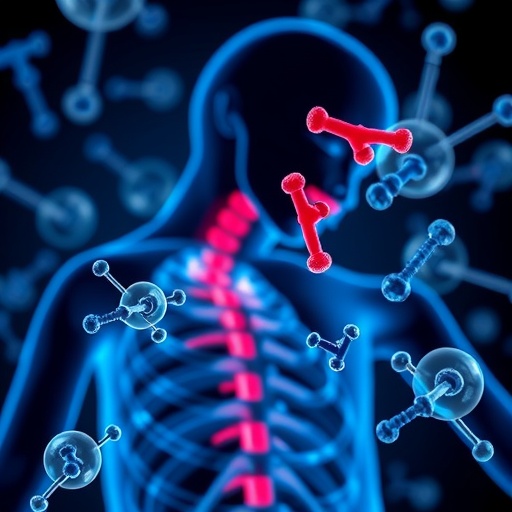In a groundbreaking leap forward for neuroscience and pharmacology, researchers at the University of Southern California (USC) have unraveled the intricate, stepwise process by which opioids engage and activate the mu-opioid receptor—a critical molecular switch that governs pain relief and addiction pathways in the brain. This unprecedented insight was achieved by capturing six high-resolution structural snapshots of the receptor mid-action, illuminating for the first time how drugs like morphine trigger receptor activation and how lifesaving antagonists such as Narcan (naloxone) halt this signaling cascade.
Opioids exert their potent analgesic effects by binding to mu-opioid receptors embedded within neuronal membranes. Despite their clinical importance, the detailed molecular choreography from initial drug binding to receptor activation has remained elusive. Using state-of-the-art cryo-electron microscopy (cryo-EM) to freeze these fleeting molecular events in near-atomic detail, the USC team produced a molecular “slow-motion movie” that charts the receptor’s entire conformational journey from an inactive to an active state and identifies unique intermediate states that precede full activation.
The mu-opioid receptor belongs to the expansive family of G protein-coupled receptors (GPCRs), which mediate numerous physiological processes by translating extracellular signals into intracellular responses. When an opioid binds, it prompts the receptor to interact with a G protein inside the cell, catalyzing the release of GDP (guanosine diphosphate) from the G protein subunit. This event triggers a cascade of downstream signals that ultimately suppress pain perception. Yet, this signaling pathway also underpins side effects such as respiratory depression and addiction, which have led to a devastating opioid overdose crisis worldwide.
Before this study, structural data were limited to static “on” and “off” states of the receptor, offering only crude snapshots of a complex signaling process. By contrast, the USC researchers resolved multiple intermediate conformations, revealing how the receptor’s architecture subtly shifts to facilitate nucleotide release and G protein engagement. These insights were derived from eight distinct three-dimensional models and 16 cryo-EM images, enabling the team to capture molecular movements previously only hypothesized.
One particularly striking finding was the mechanism by which Narcan, the opioid overdose antidote, disrupts receptor function. Rather than preventing opioid binding outright, Narcan locks the receptor into a “latent” conformation—effectively a molecular pause state—that halts the signaling process before GDP can be released. This novel understanding explains why Narcan can rapidly reverse opioid effects in emergency scenarios and spotlights potential strategies for designing even more effective antidotes with longer durations of action.
Similarly, the study elucidated how other opioids, such as loperamide—a potent drug that remains confined to peripheral tissues and does not cross the blood-brain barrier—activate the receptor by favoring conformations that immediately promote nucleotide exchange. This mechanistic contrast between different opioids offers a blueprint for designing new analgesics that maximize therapeutic benefit while minimizing central nervous system side effects like addiction and respiratory depression.
The ramifications for drug development extend well beyond pain management. Approximately one-third of all FDA-approved medications target GPCRs, which regulate diverse biological functions including mood, metabolism, and cardiovascular health. The meticulous molecular maps generated in this research set a new standard for understanding receptor dynamics and promise to catalyze breakthroughs in treatments for a wide array of diseases by enabling the design of drugs with enhanced specificity and safety profiles.
Cryo-EM was instrumental to these discoveries. By rapidly freezing receptor complexes in their native states at liquid nitrogen temperatures, the researchers circumvented the challenges posed by receptor flexibility and transient interactions. The high-resolution datasets were further complemented by sophisticated molecular dynamics simulations, which validated that the captured structural intermediates authentically represent the receptor’s natural conformational landscape.
The study’s senior author, Cornelius Gati, likens the exhaustive detail to watching the engine of a car run in slow motion, where every component’s movement becomes discernible. This vivid imagery underscores the paradigm shift from static images to dynamic molecular cinematography, allowing scientists to decode the intricate dance of proteins and ligands as never before.
This advancement arrives at a critical time. The opioid epidemic continues to claim tens of thousands of lives annually, exacerbated by the proliferation of synthetic opioids such as fentanyl, which exhibit far greater potency and risk. Current antidotes like Narcan, while lifesaving, have pharmacokinetic limitations that necessitate repeated dosing. The atomic-level understanding of receptor-antidote interaction paves the way for next-generation therapeutics that could improve overdose outcomes, potentially saving countless lives.
Moreover, these findings open the door to designing “biased agonists” or partial agonists—drugs that selectively activate beneficial signaling pathways within the receptor while avoiding pathways that cause adverse effects. By manipulating the receptor’s conformational states, researchers could someday decouple pain relief from euphoria and respiratory depression, addressing the root causes of opioid addiction and overdose.
Looking forward, the team envisions leveraging these structural blueprints to facilitate rational drug design techniques, accelerating the development of safer painkillers and more potent overdose treatments. The synergy between cryo-EM and computational methods exemplifies how cutting-edge technologies can transform basic science insights into translational medical advancements.
In summary, this pioneering work represents a quantum leap in our molecular understanding of opioid receptor function. By capturing a “molecular movie” of receptor activation and inhibition in unprecedented detail, the USC team has set a new gold standard for receptor biology, offering hope for more effective, safer analgesic drugs and improved opioid overdose interventions in an era when such innovations are urgently needed.
Subject of Research: Not applicable
Article Title: Structural snapshots capture nucleotide release at the μ-opioid receptor
News Publication Date: 5-Nov-2025
Web References:
https://dx.doi.org/10.1038/s41586-025-09677-6
References:
Cornelius Gati et al., “Structural snapshots capture nucleotide release at the μ-opioid receptor,” Nature, 2025.
Image Credits:
Saif Khan and Vishwang Gowariker/USC Dornsife
Keywords:
Mu-opioid receptor, opioid activation, Narcan, naloxone, cryo-electron microscopy, G protein-coupled receptors, GDP release, opioid overdose, receptor conformational dynamics, drug design, biased agonism, respiratory depression




